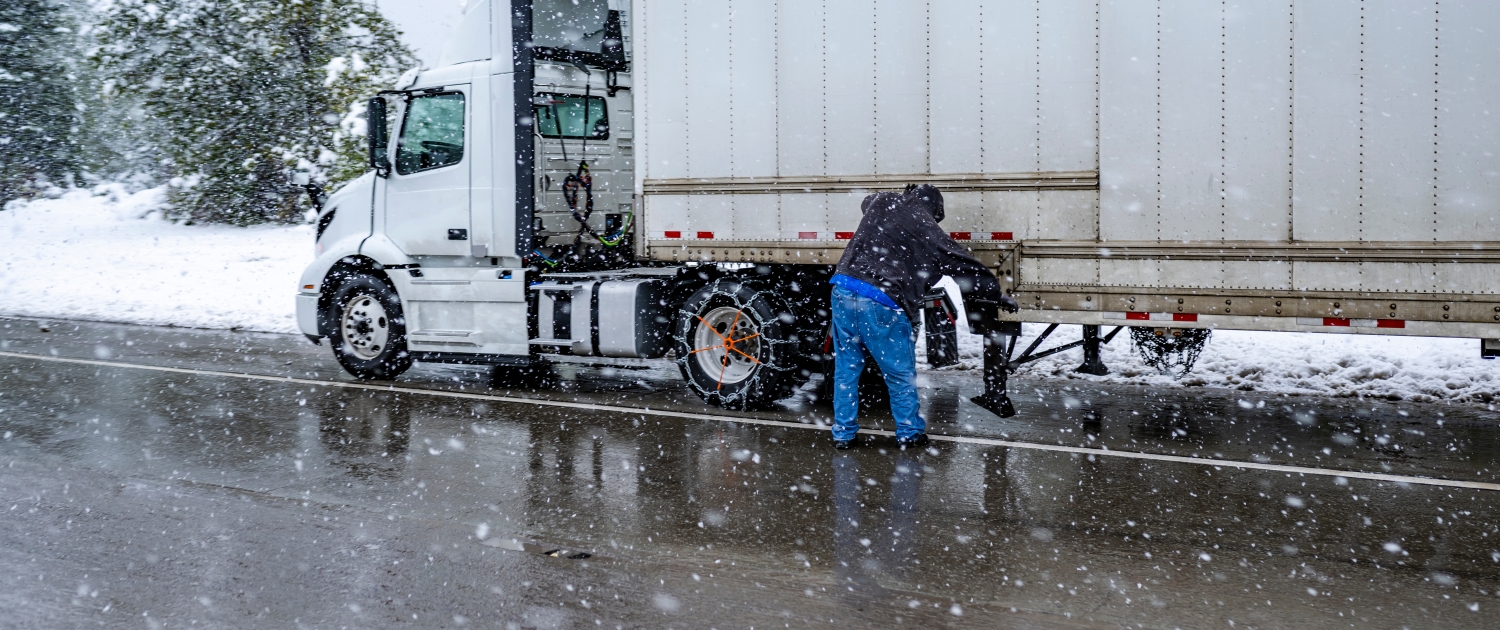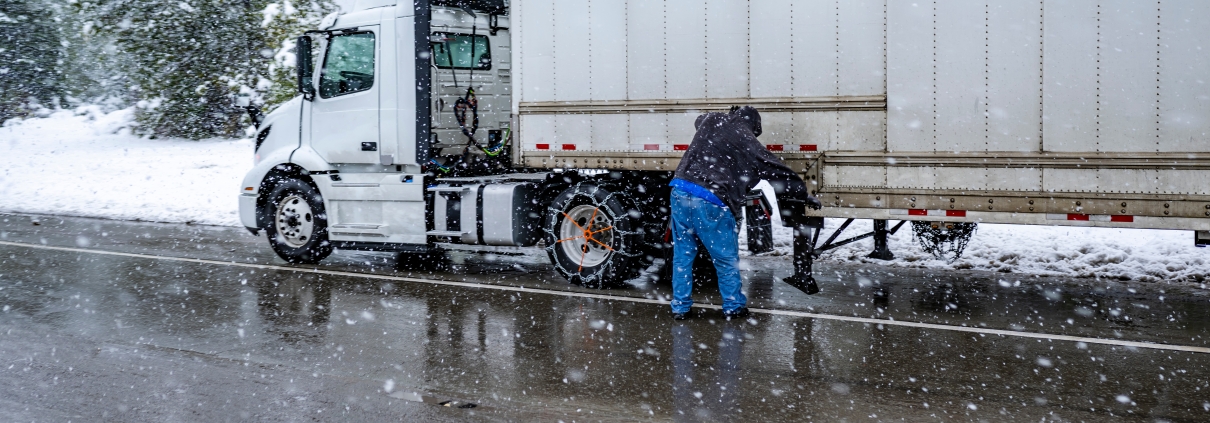
Driving any motor vehicle during icy and snowy conditions brings an inherent risk. When that motor vehicle is a 25-ton semi-truck, that risk becomes amplified. Drivers need all the help they can get when out on the road in these conditions. That’s where snow chains come in. Snow chains have been used for over 100 years to help drivers of all vehicle types gain traction and avoid wheel spin on snowy and icy roads. Aside from the obvious safety aspect here, most states have chain laws that you’ll need to follow as well during icy and snowy conditions.
Step 1: Lay Down Chains and Inspect
Lay your chains out flat on the ground and look them over for any damage or twists/knots that you’ll need to undo. Once you’ve ensured they’re in good working order, check that the chain hooks are facing up as well. This will be important later.
We talked to CDL Driver, Kirstie about how she chains up her tires for winter,
“The most important thing is to check your chains, especially if you’re not very familiar with the ones you’ve been assigned. Lay them out flat on the ground and inspect the cams, hooks, links and be sure they are not twisted. If possible, I always tried to put them on a drive axle directly below the fifth wheel for maximum weight and better traction,” shared Kirstie
Step 2: Attach Chains
Place the chains over the top of your tire. They should hang or drape down over each side. Make sure they’re evenly distributed on both sides with the hooks facing out, away from the tire. Next, you’ll need to physically attach the chains to each other.
For this part, it’s always best to do the inside of the tire first. This can be difficult given that you’ll need to get under your truck, so some drivers prefer to use a tool like a rod as opposed to their hands. Either way, you’ll need to loosely attach the chain links to each other at the bottom of the tire. Repeat this step on the outside of the tire as well. The goal here isn’t to get them as tight as you can, just connecting the links from one side to the other is fine.
You’ll also need to make sure that you have the same number of excess links on the front and back side of the tire. If you have three extra links on the back side, then you should have three extra links on the front side. If the front and back are different, that will cause the chain to rotate unevenly when you’re driving.
“Lay them out flat on the ground and drive onto them, then begin the arduous task of actually connecting them, a good chaining key, or cam key is a must! Once they are on properly, they should be quite tight over the wheel. It’s a good idea to stop, check, and even retighten them. I always kept my windows open a crack while running chains as well. It’s important to hear what’s going on, and should anything come loose, you will be aware,” shared Kirstie.
After this, you’ll need to get into your truck, and drive forward just a few feet so that you can get the connection points of the chain in a safe area for you to tighten them.
Step 3: Tighten Links and Cams
Now that the chains are attached to the tire, they’ll need to be tightened. By hand, connect the chain to the closest possible link. You’ll want to pull in the most slack that you can manage. After you’ve done this, you’ll want to use your adjusting wrench to physically turn the cams on the chain.
This will tighten the chains even more. It’s ok if you’re not able to give each cam a full turn, you may only be able to get one or two of them to one full turn, but that’s fine. The goal here isn’t to get the chains as tight as possible. The general rule is to get them tight enough that you can get a few fingers in between the chain and the tire comfortably.
Step 4: The Extra Mile
To make your semi-truck tires even more secure, add bungee cords across the chains. The bungees will attach from one end of the chains to the other. Three or four bungees will do the trick.
The key here is when attaching the bungees, make sure the hook is facing away from the tire. You don’t want it rubbing up against the tire, causing damage to the outside wall of the tire. Also make sure not to attach the bungee cords directly to the cams.
As a truck driver, taking your rig out in snowy and icy conditions is never ideal. If you do have to go out in the elements, safety is key. While it’s a big one, chaining up your semi-truck tires is only one part of winter driving safety. There’s a number of other ways to make sure you’re doing everything you can to stay safe in difficult conditions.
Find a Truck Driver Job
Drive My Way matches you with a job based on your personal preferences and qualifications.












